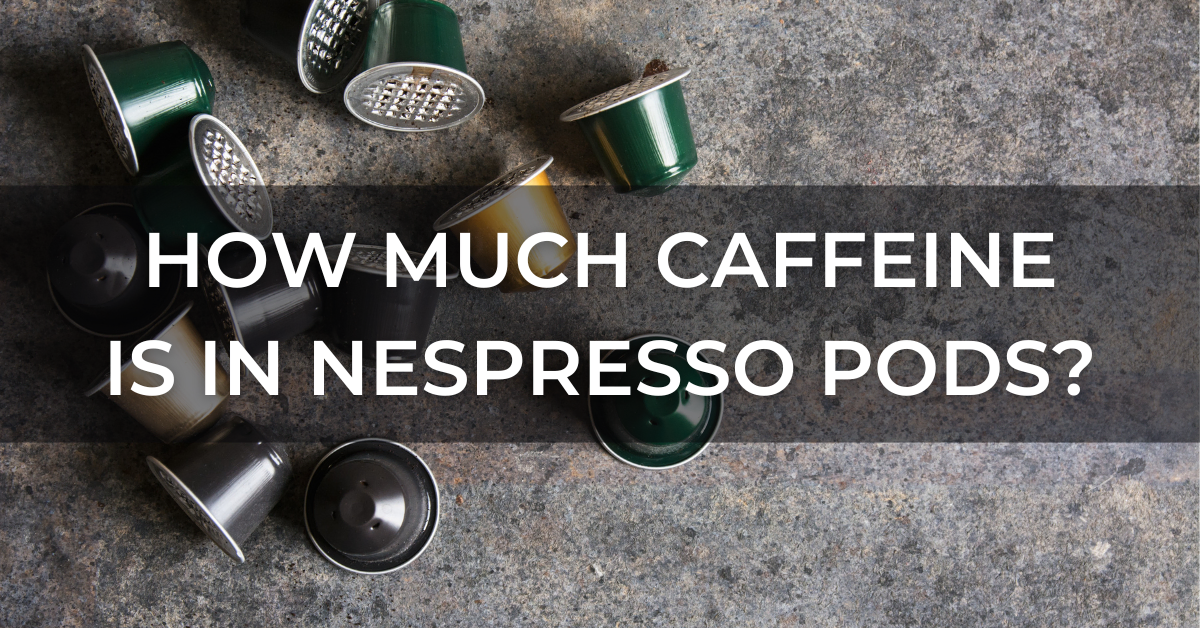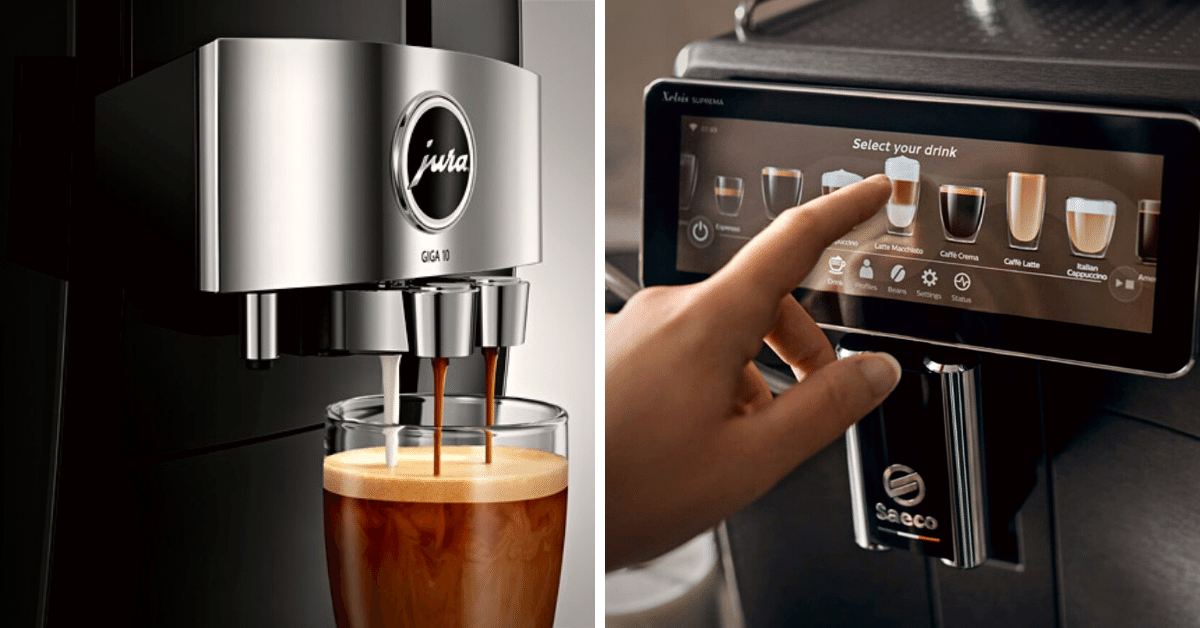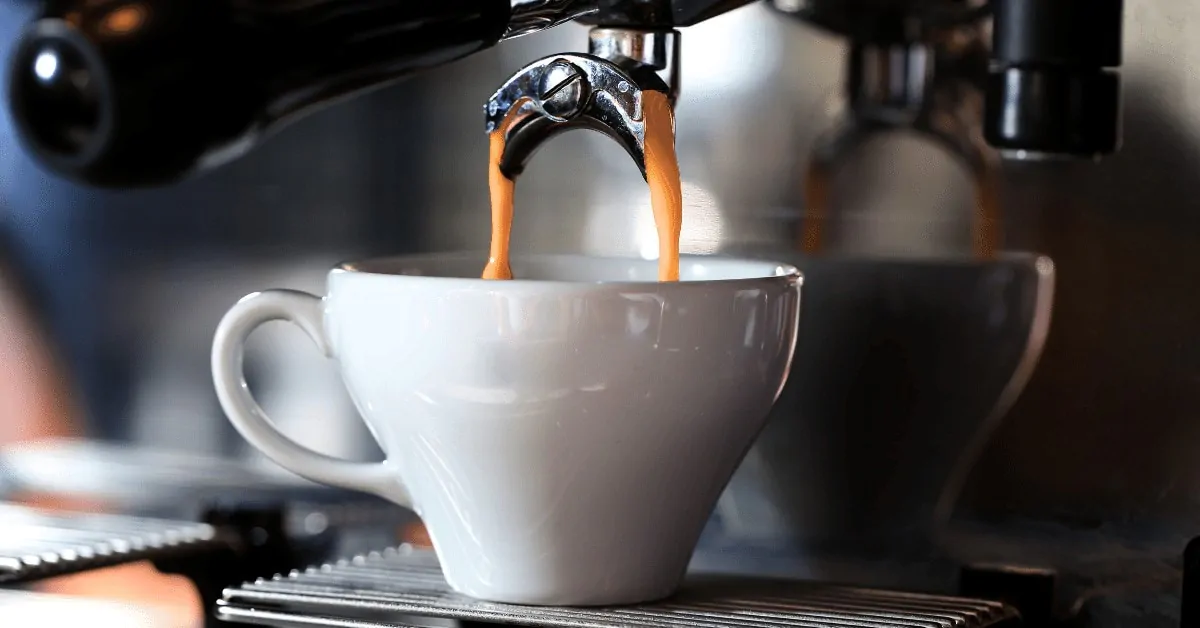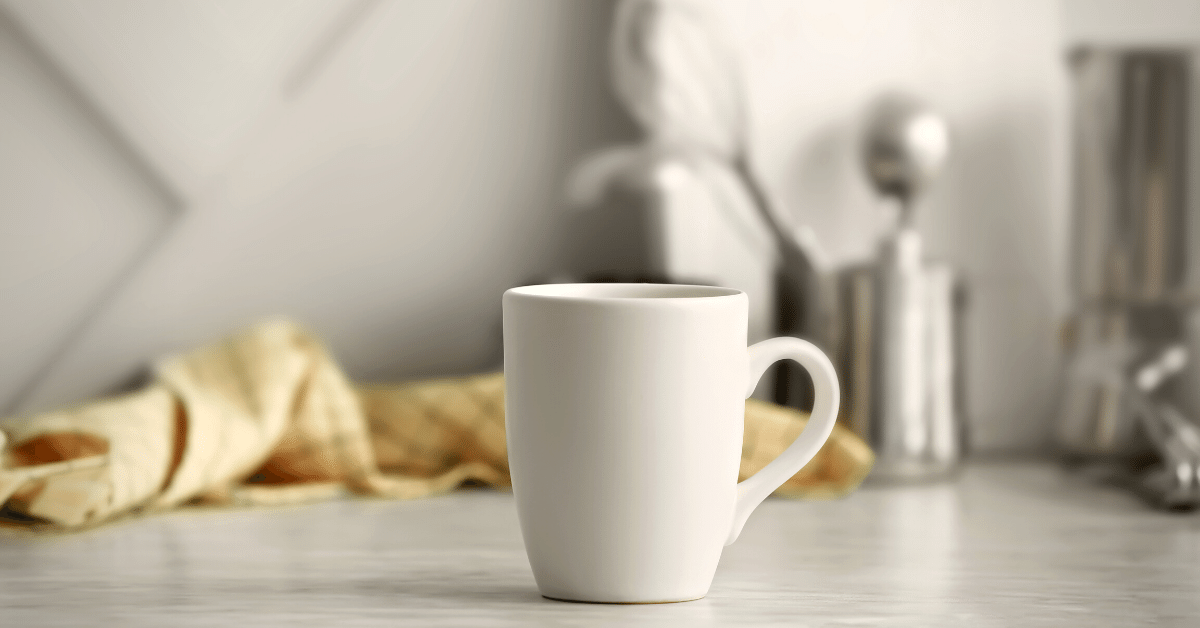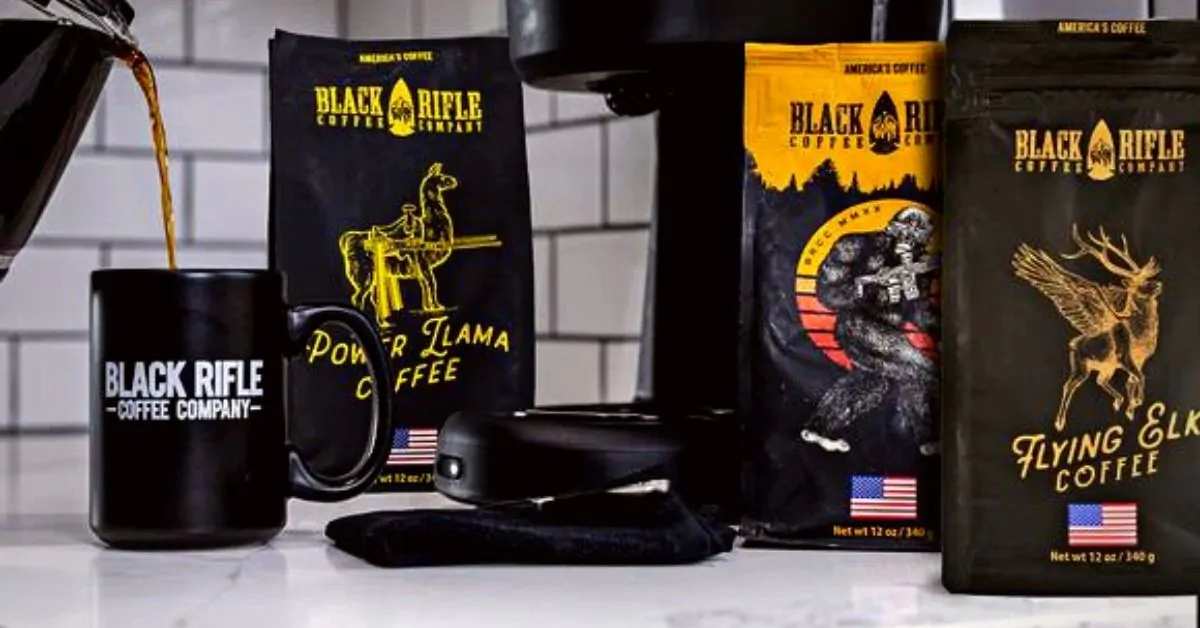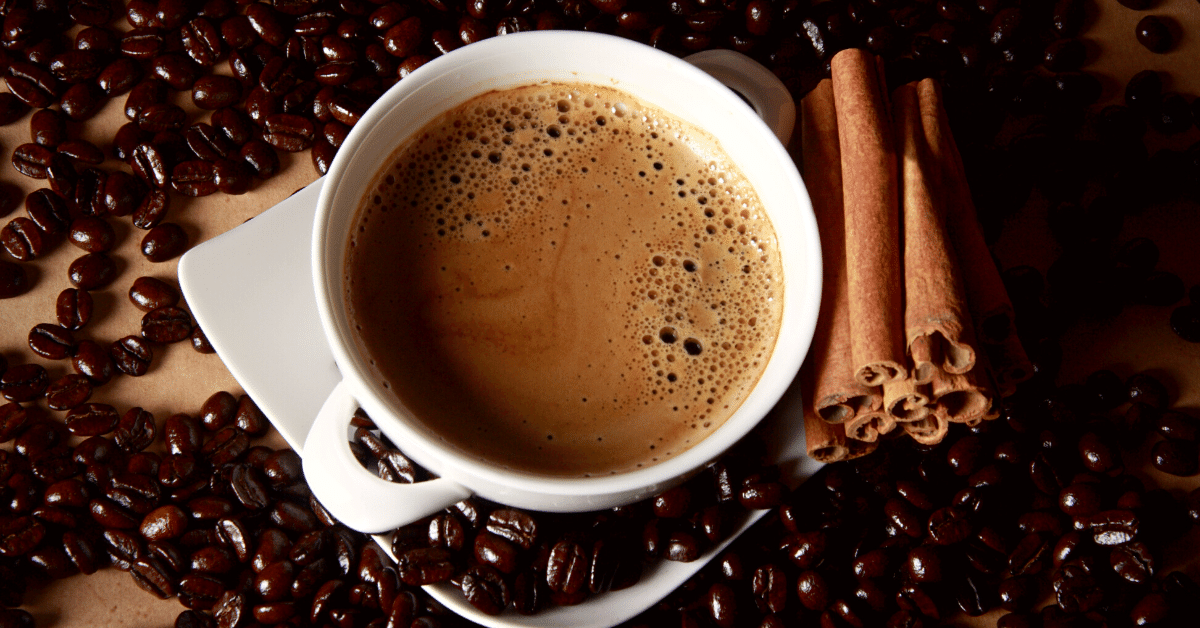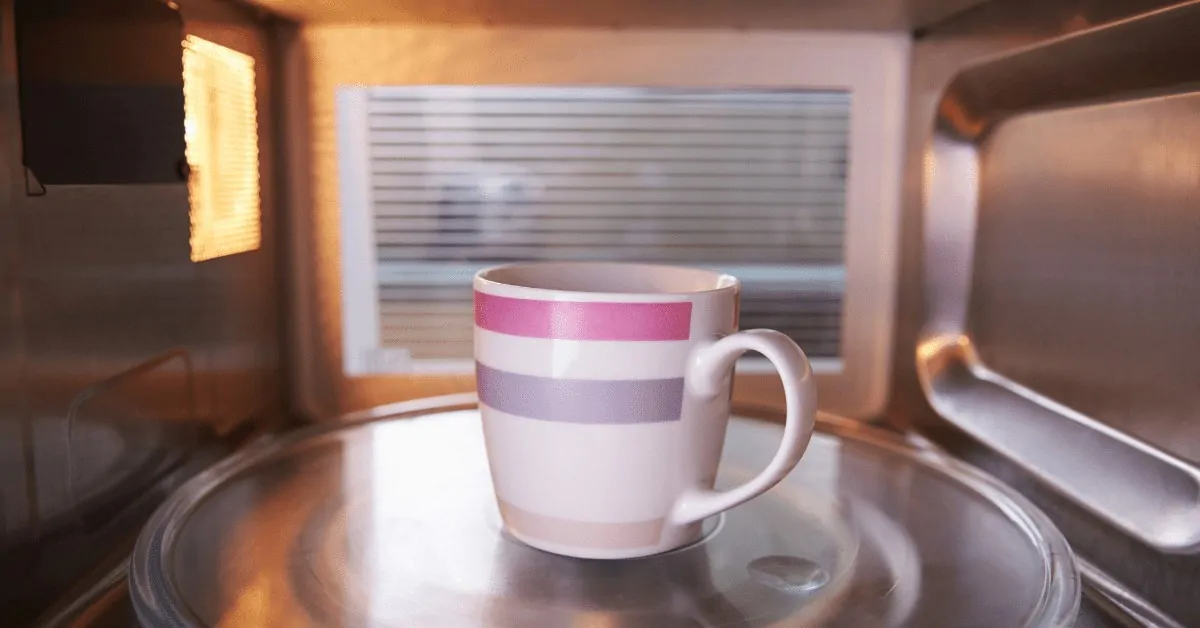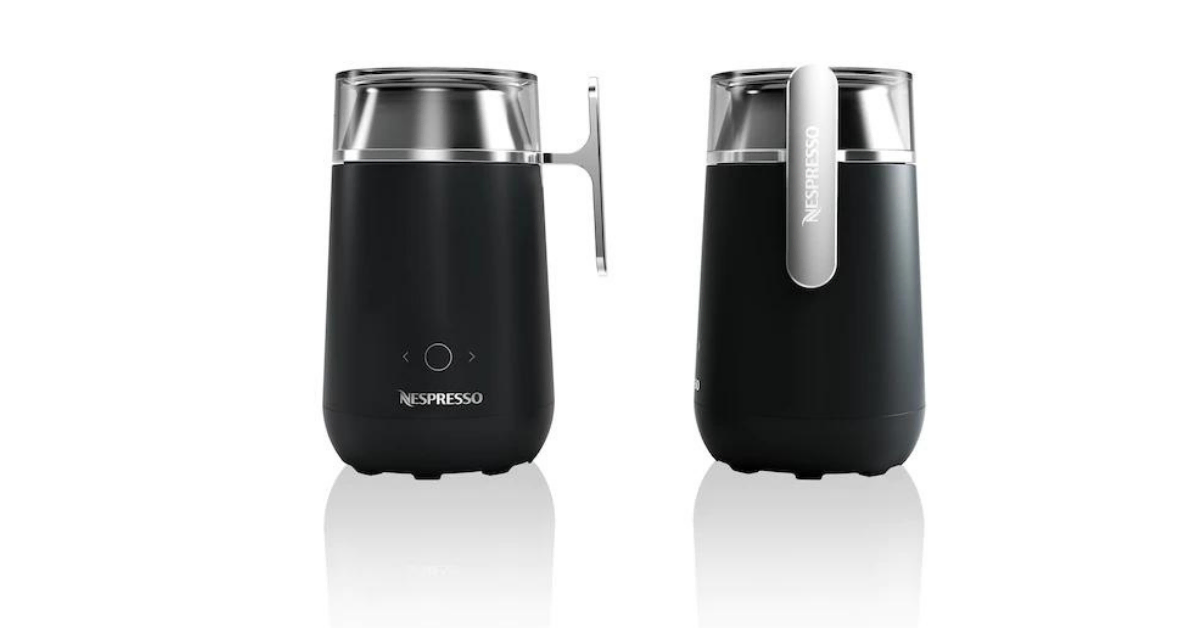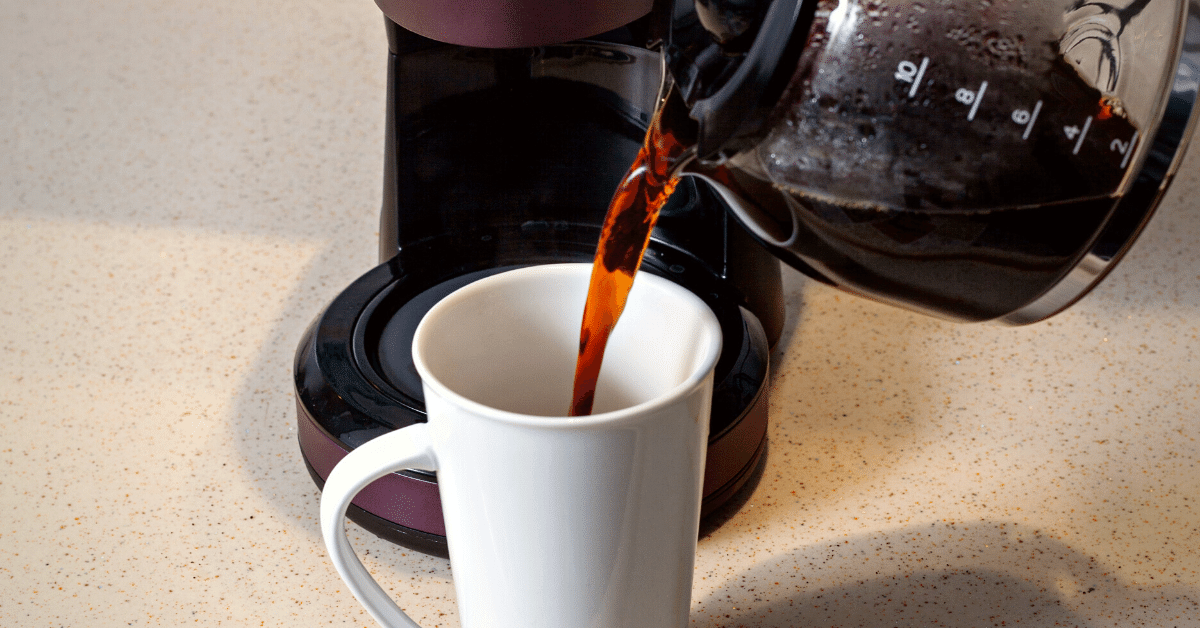Wondering if Nespresso capsules can satisfy your caffeine craving?
Well, you will not find the exact caffeine content written on the pods.
However, I pulled a few tricks and managed to discover the real Nespresso caffeine content.
The caffeine level of Nespresso pods ranges from 2mg to 195 mg.
Today I will tell you:
- How much caffeine is in each type of pod
- Are decaf pods really without caffeine
- Are intensity and caffeine levels the same thing
Let’s dive straight in!
Nespresso Caffeine Content: All You Need To Know
Long story short:
Nespresso pods with the least caffeine amount are decaf pods: <2mg.
If you are searching for a caffeine booster, the highest you can go is: Kazaar pods with 125 mg (Original Line) and Fortado pods with 195 mg (Vertuo Line).
The middle range of Original Line capsules is 60mg, while Vertuo Line is 165 mg.
NESPRESSO CAFFEINE CONTENT | ||
Caffeine content (mg) | OriginalLine | VertuoLine |
Lowest | <2 mg Decaffeinato | <2 mg Decaffeinato |
Average | 60 mg | 165 mg |
Highest | 125 mg Kazaar | 195 mg Fortado |
How I Discovered the Real Nespresso Caffeine Content
You might have noticed that Nespresso doesn’t actually state the exact caffeine content on its pods. Instead, what we get is just a vague range estimation of caffeine concentration.
According to Nespresso, the caffeine amount inside a pod is affected by several factors. These include bean variations and serving sizes. So not only that caffeine content can vary from batch to batch but also between pods from the same sleeve.
To avoid stating the wrong amount, the brand simply states the range between the highest and lowest possible values.
So, for instance, single espresso pods generally have between 60 and 150 mg of caffeine. This practically means that certain pods within the same box can have three times higher caffeine amounts than others.
So, how did I find out the exact caffeine content of Nespresso pods?
In certain countries, each product that contains caffeine must be labeled with the exact amount. And guess what? You can just go to the Nespresso web domain for that certain country and read these “top-secret” numbers on the ingredient list.
Well, I did it instead of you. Here is a complete guide to the caffeine content in Nespresso pods.
How Much Caffeine Is In Original Line Capsules?
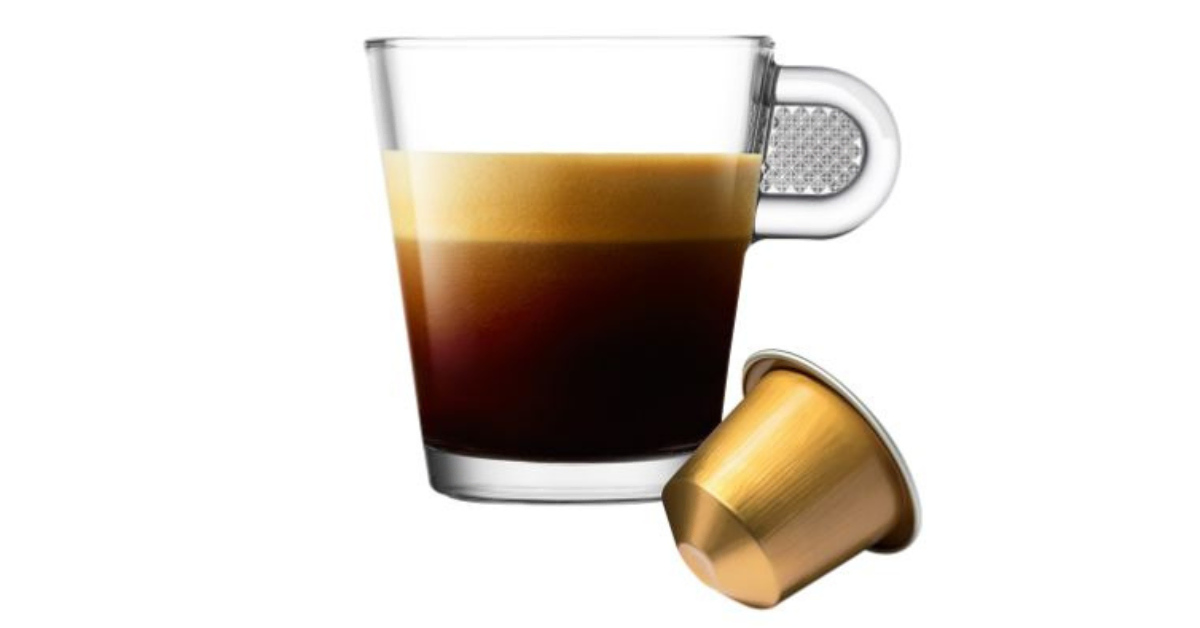
The majority of Nespresso coffee capsules from the Original Line contain about 60 mg of caffeine. This is exactly how much a single cup of espresso should have.
ESPRESSO - 1.35 oz | ||
Pod | Intensity | Caffeine |
Cosi | 4 | 60 mg |
Volluto | 4 | 60 mg |
Capriccio | 5 | 60 mg |
Livanto | 6 | 60 mg |
Variations capsules all contain 60 mg of caffeine. The only thing that varies is the intensity.
VARIATIONS - 1.35 oz | ||
Pod | Intensity | Caffeine |
Vanillio | 6 | 60 mg |
Caramelito | 6 | 60 mg |
Ciocattino | 6 | 60 mg |
Intenso capsules mostly contain 60 mg of caffeine, with the exception of the Kazaar pod, which has 125 mg. This makes it the strongest pod in Original Line.
INTENSO – 1.35 oz / 0.84 oz | ||
Pod | Intensity | Caffeine |
Roma | 8 | 60 mg |
Arpeggio | 9 | 60 mg |
Ristretto | 10 | 60 mg |
Dharkan | 11 | 60 mg |
Kazaar | 12 | 125 mg |
Pure Origin capsules have 60 mg of caffeine. However, each has different intensity.
PURE ORIGIN - 1.35 oz | ||
Pod | Intensity | Caffeine |
Bukeela ka Ethiopia | 3 | 60 mg |
Dulsao do Brasil | 4 | 60 mg |
Rosabaya de Colombia | 6 | 60 mg |
Indriya from India | 10 | 60 mg |
Lungo capsules contain slightly more caffeine (80 mg) compared to other Original Nespresso coffee pods. That is thanks to the longer brewing time, as well as a higher amount of coffee grounds.
LUNGO - 3.72 oz | ||
Pod | Intensity | Caffeine |
Linizio | 4 | 80 mg |
Vivalto | 4 | 80 mg |
Fortissio | 8 | 80 mg |
Envivo | 9 | 80 mg |
Finally, we have Decaffeinato capsules. Although it’s decaf coffee, it still has a minimal amount of caffeine – less than 2 mg.
DECAFFEINATO - 1.35 oz / 0.84 oz | ||
Pod | Intensity | Caffeine |
Vivalto Decaffeinato | 4 | <2 mg |
Volluto Decaffeinato | 4 | <2 mg |
Arpeggio Decaffeinato | 9 | <2 mg |
Ristretto Decaffeinato | 10 | <2 mg |
The Bean Variety Plays an Important Role
The Nespresso Original Line collection is specialized in espresso-based drinks. It offers such a wide range of roasts and blends available that you can make your cup of coffee taste different each time.
All Nespresso coffee capsules are blends of Arabica and Robusta coffee bean varieties. The only exception is the Master Crafted Single Origin range.
Why am I telling you this?
Well, because Robusta beans contain twice as much caffeine as Arabica beans. So logically, blend composition affects the Nespresso pod caffeine content.
An example of this is Palermo Kazaar, containing as much as 125 mg of caffeine per single espresso cup.
Inspired by Italian coffee-making tradition, this dark roast has generous Robusta content. Not only does Robusta highlight the dark and spicy notes, but it also increases the caffeine content.
The Caffeine Content of Vertuo Line Nespresso Pods

The Vertuo Line offers a smaller capsule selection compared to the Original Line. But that makes up by letting you choose between different types and sizes of coffee drinks.
Why I’m bringing that up?
If you were to compare the caffeine contents of different Vertuo capsules, you should also consider the size of the drink.
However, all the pods from this range have pretty much the same amount of caffeine – 165 mg. The exceptions are, obviously, the half-caffeinated and decaffeinated versions.
VERTUO LINE | ||
Pod | Intensity | Caffeine |
Solelio | 2 | 165 mg |
Giornio | 4 | 165 mg |
Elvazio | 4 | 165 mg |
Half Caffeinato | 5 | 70 mg |
Decaffeinato | 6 | <2 mg |
Melozio | 6 | 165 mg |
Hazelino | 6 | 165 mg |
Caramelizio | 6 | 165 mg |
Vanizio | 6 | 165 mg |
Odacio | 7 | 165 mg |
Stormio | 8 | 165 mg |
Intenso | 9 | 165 mg |
How Much Caffeine Is In Single Espresso Pods?
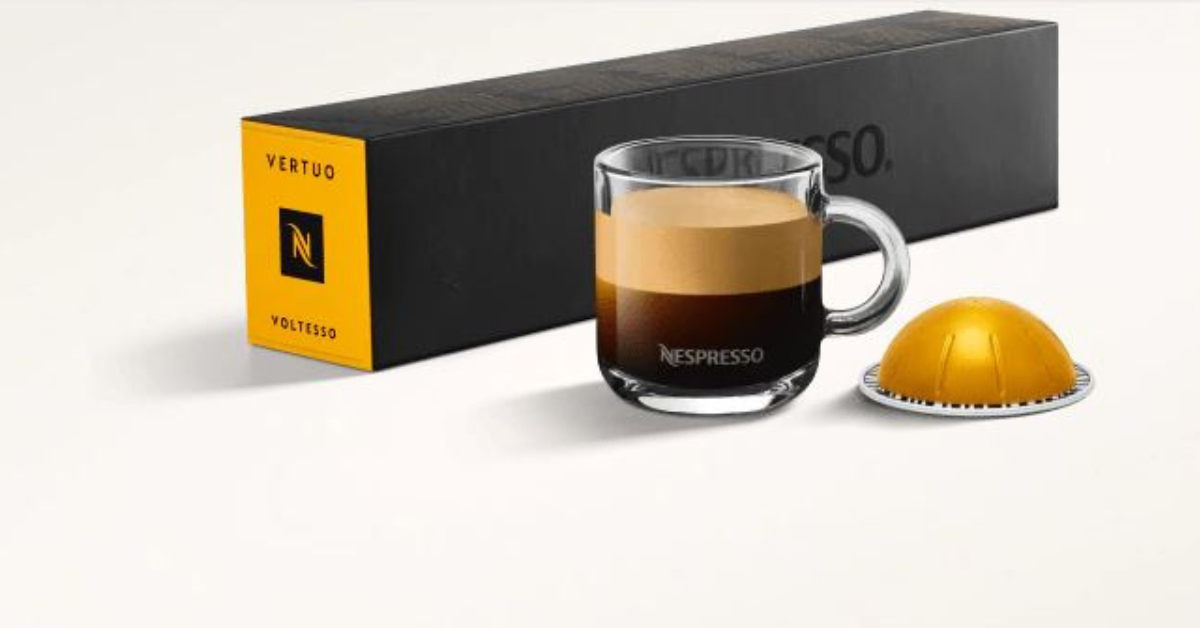
As far as single espresso capsules go, most of them have a caffeine content of 85 mg, which is slightly more than your typical cup of espresso.
With that being said, Diavolitto, Orafio, and Il Caffe are even more caffeinated. This is, of course, mainly thanks to the high content of Robusta grounds.
SINGLE ESPRESSO - 1.35 oz | ||
Pod | Intensity | Caffeine |
Voltesso | 4 | 85 mg |
Decaffeinato Intenso | 7 | <4 mg |
Altissio | 9 | 85 mg |
Diavolitto | 11 | 150 mg |
Toccanto | 5 | 85 mg |
Orafio | 6 | 110 mg |
Il Caffe | 11 | 129 mg |
Does Gran Lungo Have More Caffeine?
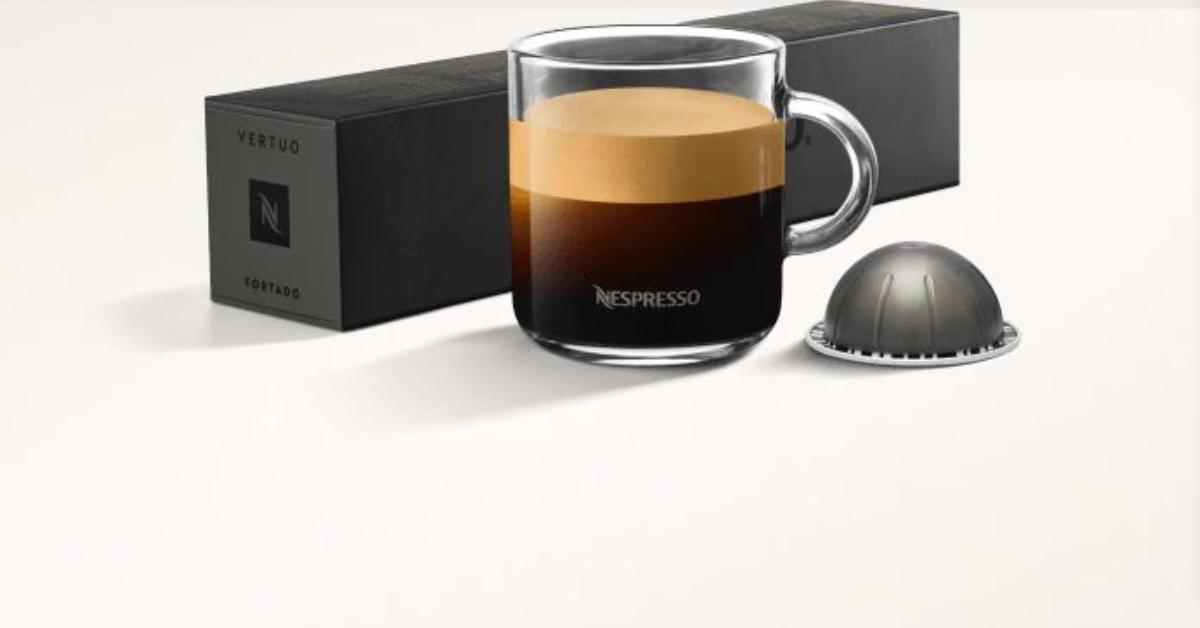
Nespresso Lungo capsules have between 120 and 200 mg of caffeine, which is almost half the recommended daily caffeine intake.
But once you learn that Gran Lungo is a 5-ounce coffee drink, that number isn’t so big anymore.
GRAN LUNGO - 5 oz | ||
Pod | Intensity | Caffeine |
Inizio | 4 | 120 mg |
Fortado | 8 | 195 mg |
Fortado Decaffeinato | 8 | <2 mg |
Arondio | 6 | 150 mg |
Double Espresso: The Caffeine Booster
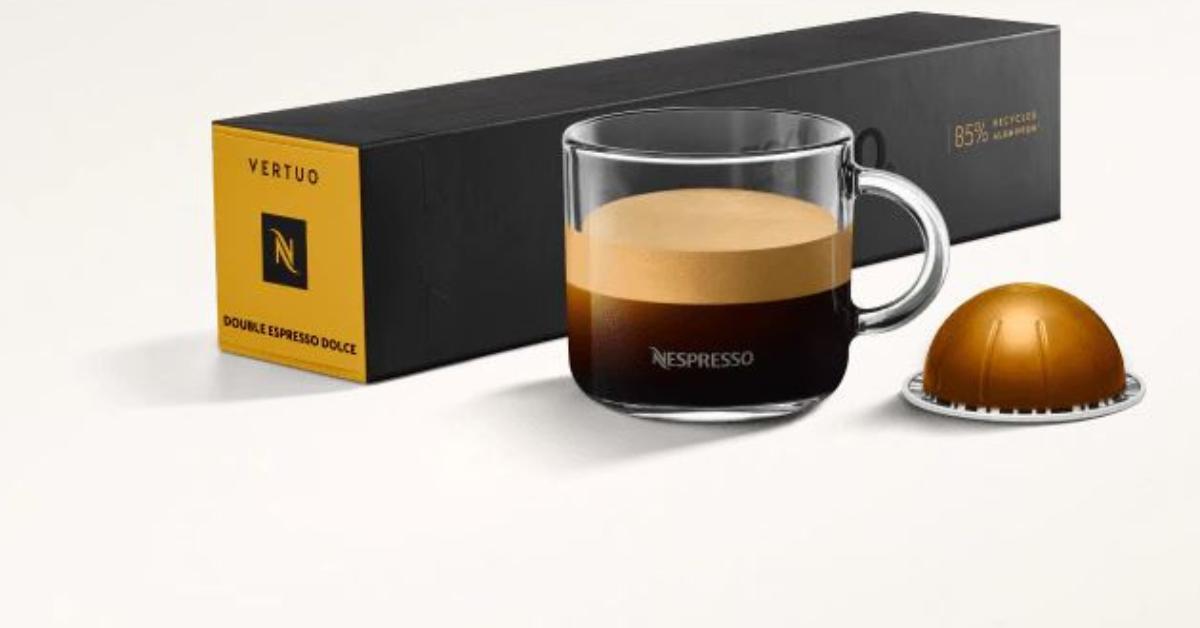
A double espresso is literally what the name says it is – a double shot of espresso. So naturally, this drink has about twice the caffeine a single shot has.
DOUBLE ESPRESSO - 2.7 oz | ||
Pod | Intensity | Caffeine |
Double Espresso Dolce | 5 | 133 mg |
Double Espresso Scuro | 11 | 150 mg |
Double Espresso Chiaro | 8 | 135 mg |
What About Decaf Pods?
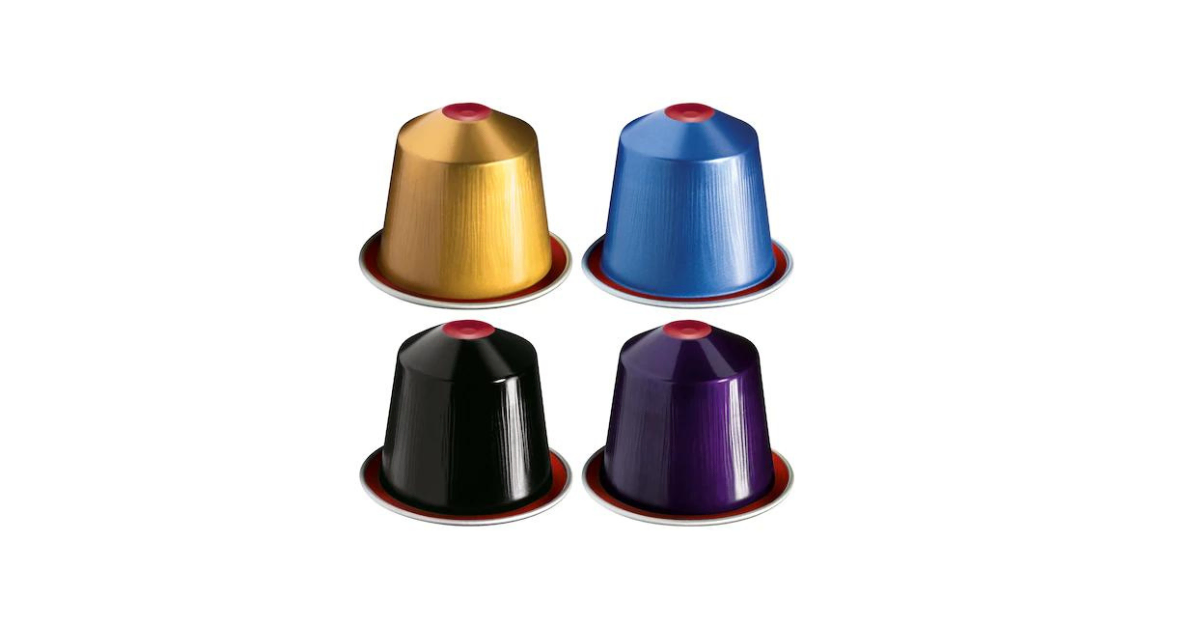
You might think that a decaf coffee pod is free of caffeine – I mean, that’s literally what the name suggests. But that’s not actually the case.
Decaf pods contain up to 3 mg of caffeine per cup, which is in accordance with coffee standards.
Decaffeinated coffee is simply coffee that has the caffeine dissolved from the beans through a chemical process. But the process isn’t perfect, and there’s almost always at least a tiny bit of residue left.
Nespresso offers three decaf formulas:
- Volluto,
- Firenze,
- Ristretto
The Difference Between Caffeine and Intensity
As I previously said, the real caffeine values of particular coffee pods are a well-guarded secret at Nespresso.
So how can one know how strong a certain Nespresso coffee pod is without trying it first?
Well, Nespresso uses intensity to describe the flavor of each pod. Intensity is expressed in numbers from 1 to 11, and it’s defined by three things – roasting degree, coffee body, and bitterness.
Intensity simply indicates how robust coffee is, but it doesn’t determine the amount of caffeine in any way.
That’s not to say coffee with a high-intensity rating can’t also be high in caffeine. Robusta coffee, for instance, has both: a strong, intense flavor and high caffeine level.
So while a certain Nespresso coffee capsule can be both strong and highly caffeinated, that’s more of a coincidence than a rule.
FAQ
Still have unanswered questions about Nespresso caffeine content?
Let’s solve that now. Here are the answers to some most common questions I get about the subject.
Is there more caffeine in Nespresso than regular coffee?
A cup of regular brewed coffee contains roughly 83 mg of caffeine, more than most Nespresso pods. With that being said, certain Nespresso drinks contain over 100 mg of caffeine, making them more energetic than regular coffee.
Which coffee pods have the most caffeine?
Depending on the roast and coffee bean type, certain Nespresso capsules contain more caffeine than others. As we already established, Robusta varieties have twice the amount of caffeine of the Arabica bean. But the Nespresso drink with the highest caffeine content is definitely Fortado, with as much as 195 mg of caffeine per cup.
How much caffeine should you have in a day?
According to FDA, 400 milligrams a day is considered safe for healthy adults. That roughly translates to about four to five cups of coffee. As for teens, they shouldn’t consume more than 100 mg per day.
Keep in mind that if you use stimulants like caffeine too much, your body will get used to it.
Final Thoughts
Keeping up with your daily caffeine intake can be quite a task without precise caffeine content on the packaging.
But with a few tricks up my sleeve, I’ve managed to find out the Nespresso caffeine content. Whether you’re trying to stay within the daily limit or simply don’t tolerate high caffeine well, I’m sure this list will help you find the right drink for you.
Just remember – these numbers are more of a guideline than strict rules, so treat them as such.
Wondering how long you can keep your coffee capsules on the shelf? Check out everything you need to know about the expiration date of Nespresso pods.

